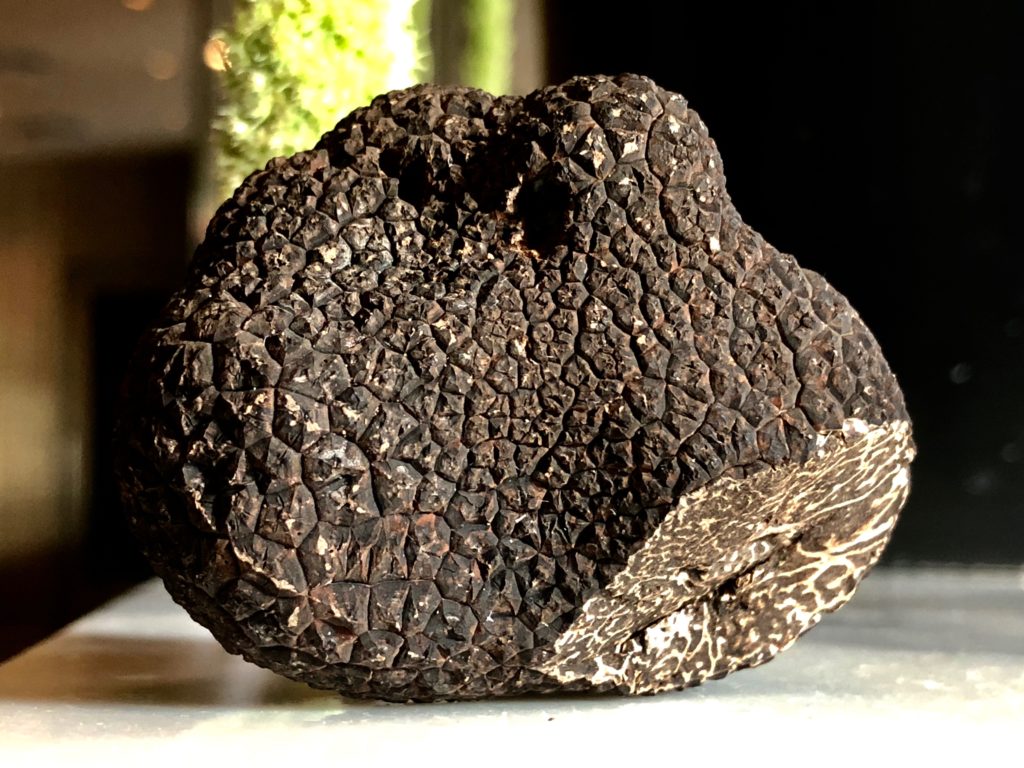Within truffle cultivation, some basic parameters are understood. For example, it is widely accepted that to cultivate Périgord black truffles (Tuber melanosporum) we need a suitable climate, alkaline soils and host trees whose roots have formed mycorrhizal structures with T. melanopsorum. Across the globe, these basic principles form the basis of truffle cultivation and an approach that is broadly successful. However, the very basic question of how a truffle forms and what triggers this development is still poorly understood. One of the most basic questions can be summarized in one word that has occupied humans for millennia: sex.
The advent of DNA sequencing technology has led to huge advances in understanding nature, almost everywhere it has been applied. For T. melanosporum, this application led to the discovery that there are two mating types (or ‘sexes’) and these must come together to from fruiting bodies (truffles). So far, so good. However, things get a little more complicated the closer we look. If we take an individual truffle, it is possible to identify a genetic ‘finger print’ for both sexes that were involved in its creation. The ‘maternal partner’ is a term used to define the mating-type that contributed the bulk of the resources to form the truffle, with the ‘paternal partner’ providing genetic material by way of sexual interaction (insert relevant social commentary here). The maternal partner is often relatively easy to locate and is frequently identified on nearby tree roots, forming mycorrhiza. However, attempts to locate the source of the paternal partner within the soil and surrounding environment are difficult and this has not yet been achieved when sampling mycorrhiza. This leads to the very relevant question: if paternal partners can’t be found on nearby mycorrhiza, then where do they come from and how do they reach the maternal partner?
Another discovery that has been possible due to new molecular techniques is that truffle DNA has been found within the tissue of plants that don’t form truffle mycorrhiza. Incidentally, this has also been found to be the case for the second most widely cultivated species: the summer or autumn truffle, Tuber aestivum. This type of existence, termed endophytism, could perhaps define a location for the origin of the paternal partner. However, recent studies that have attempted to address this have so far drawn a blank. Further, the paternal partner is relatively ephemeral and does not show localized inter-annual persistence. Therefore, an obvious potential location for the paternal partner is the spore bank.
The term ‘spore bank’ refers to the existence of fungi spores within the soil. These spores may germinate and eventually form mycorrhiza. However, they may also have a role in the arrival of the paternal partner. Spores can travel between locations with the help of animals consuming the truffles and then depositing the spores in fecal matter. If spores are indeed the source of the paternal partner, it would give credence to many historical practices in truffle cultivation where damaged/waste truffles are individually reburied in the truffle orchard or ploughed into the ground. However, before you go out and try to seed your orchard it perhaps pays to get a sense of perspective. In one experiment, it was discovered that in a well-managed and frequently harvested commercial orchard up to 42% of the truffles remained undetected and consequently rotted within the ground. How the truffle dogs missed such a large number is surprising, and this may partly represent a component of fruiting bodies that fail to omit a mature odour. In any case, it will contribute a large number of spores, possibly far more than a truffle cultivator would be willing to add and so perhaps, in this case, our intervention isn’t always needed.
The mating world of truffles is complex and there’s still much to understand. Either mating type can fulfil the paternal or maternal role. This may sound fluid, complex and loose but consider this: some other fungi species may have thousands of different mating types. Now, imagine trying to analysis those dynamics…
Suggested further truffles and sex reading
Gryndler, Milan, et al. “Tuber aestivum association with non-host roots.” Mycorrhiza 24.8 (2014): 603-610.
Murat, Claude, et al. “Fine‐scale spatial genetic structure of the black truffle (Tuber melanosporum) investigated with neutral microsatellites and functional mating type genes.” New Phytologist 199.1 (2013): 176-187.
Schneider-Maunoury, Laure, et al. “Soil spore bank in Tuber melanosporum: up to 42% of fruitbodies remain unremoved in managed truffle grounds.” Mycorrhiza 29.6 (2019): 663-668.
Schneider‐Maunoury, Laure, et al. “Two ectomycorrhizal truffles, Tuber melanosporum and T. aestivum, endophytically colonise roots of non‐ectomycorrhizal plants in natural environments.” New Phytologist 225.6 (2020): 2542-2556.

